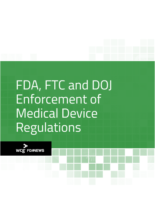
Home » FDA Indicates Flexibility in Drug Development for Rare Diseases
FDA Indicates Flexibility in Drug Development for Rare Diseases

August 20, 2015
Companies developing drugs for rare diseases that lack alternative treatments may be able to start clinical trials without the standard toxicology studies, provided they justify the approach, the FDA says.
The agency urges sponsors to meet with it early in the drug development process — before animal studies are begun — to see if such flexibility is appropriate.
The advice, outlined in guidance released last week, acknowledges the fact that patients with rare diseases may be willing to take greater risks than those with less serious diseases.
The FDA also advises pre-IND meetings to discuss the availability of appropriate endpoints.
Well-characterized efficacy endpoints may not always be available for rare diseases, the agency points out. In such cases, drugmakers should develop new patient assessment tools, taking into consideration their validity, reliability, feasibility, resistance to bias, ability to detect change and clinical interpretability.
The FDA notes, for instance, that a Phase 3 study with a primary efficacy endpoint that is clinically meaningful but prone to bias may benefit from having secondary endpoints, such as laboratory measurements, that are bias-resistant. In early-stage trials, the ability to detect change may be more important than clinical meaningfulness to establish proof of concept.
Sponsors should also take advantage of pre-IND and other meetings to discuss their knowledge of the disease pathophysiology and the proposed drug’s mechanism for treatment, the agency says.
Lack of detail about a rare disease’s pathophysiology can be overcome by examining its natural history before setting out to develop a drug. This will help the company define the disease population, design and implement clinical studies and develop outcome measures and biomarkers.
Design features for a rare disease clinical trial are the same as for other drug trials: a clear statement of objectives, a design that permits valid comparison with a control, appropriate patient selection, methods to minimize bias and assess patient’s response and ability to analyze effects of treatment. With rare disease trials, however, the minimum number of patients required to establish safety and efficacy will be considered case by case, the FDA says.
Comments on the guidance are due Oct. 16. Read Rare Diseases: Common Issues in Drug Development Guidance for Industry here: www.fdanews.com/08-17-15-rarediseases.pdf. — John Bechtel
Upcoming Events
-
21Oct
